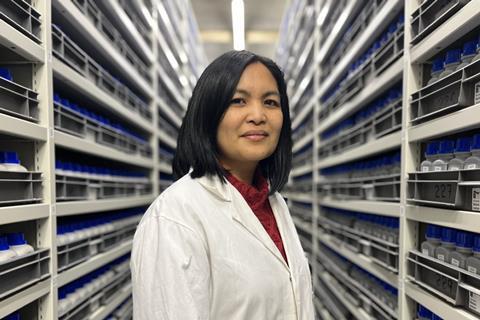Resistance to antibiotics has been found in the environment across Scotland, according to a new study by scientists at The James Hutton Institute in Aberdeen, the University of Strathclyde, the Institute of Urban Environment in Xiamen, China, and Newcastle University.

The study is the first to test – at a national level – Scotland’s soils for antimicrobial resistance, where microbes like bacteria have evolved to resist antimicrobial drugs such as antibiotics, leading to superbugs like MRSA.
Genes resistant to common antibiotics were found to be “ubiquitous” across all soils tested, including those from “relatively pristine” environments. This included microbes with genes resistant to ‘last-resort’ antibiotics for multidrug-resistant infections, like vancomycin.
Spread exacerbated
“Antimicrobial resistance has been in the environment since before antibiotics were developed for humans, but its spread has been exacerbated by human and veterinary use, with a lot of the medicines we take going into the environment via sewage and slurry,” says Hutton environmental microbiologist Dr Eulyn Pagaling.
“There’s a concern that antimicrobial resistance genes can then spread to other bacteria in the environment. These resistant bacteria could then get back into humans and then clinical environments, through contact with the environment, water or food crops, for example, impacting the effectiveness of the antibiotics we rely on day-to-day.
“With our study, we now have a baseline for how widely antimicrobial resistance genes are spread across Scotland’s soils. This means we could now look at how fast antimicrobial resistance is spreading over time and where.”
Soils of Scotland
The study, published in the Nature Group journal Communications Earth & Environment, was funded by UKRI’s Natural Environment Research Council.
It used soils in the National Soils Archive, which was created and is managed by the Hutton and contains soils dating from 1934 to the present, enabling scientists to “go back in time” to see how prevalence of things like antimicrobial resistance have changed.
Dr Charles W. Knapp, a Reader in the Department of Civil & Environmental Engineering at the University of Strathclyde and principal investigator, says, “This has been a unique opportunity to examine the National Soil Inventory of Scotland at Hutton.
“With over 200 locations and nearly 300 genes, we better understand how environmental conditions promote antimicrobial resistance abundance and diversity. More importantly, archives, as such, present a resource that can help elucidate epidemiological patterns by examining their genetic patterns in time and space, especially how they could be influenced by human impact.”
Entering the environment
In addition to this study, the Hutton is also looking ways antimicrobial resistance (AMR) enters the environment, including through sewage and land use.
One of the drivers of AMR is the amount of pharmaceuticals entering the environment, the institute’s scientists are also collaborating with the Scotland One Health Breakthrough Partnership and the NHS to see whether alternatives to prescribing of antibiotics for human use could help to tackle this problem. This could be social prescribing, including going for a swim or talking a walk or prescribing of environmentally less harmful compounds.
For study of the spread of AMR in Scotland, nearly 200 soil samples, collected on a 20 km grid between 2007 and 2009, as part of the National Soil Inventory of Scotland (NSIS), were tested.
Until now, research into antimicrobial resistance in Scotland has focused on specific locations, giving a limited picture of its prevalence in the wider environment.
The study can be found in Nature journal Communications Earth & Environment here.
Study caveats
The study was limited to testing what was in the soils. While it looked for correlations between land use and location and antimicrobial resistance, little was found. However, other environmental factors like metals and organic pollutants were shown to play a role in levels and diversity of antimicrobial resistance genes.
The authors also note that, since the soil can be also highly variable, it’s also hard to infer too much from a single study. It’s also still unclear of the reasons for local hot spots, leading to a need to do more research.
However, the study does point to areas where extra surveillance might be wise and highlight areas such as Aberdeenshire where there were higher numbers of antimicrobial resistance genes to beta-lactam, an antibiotic group which includes penicillin.







No comments yet